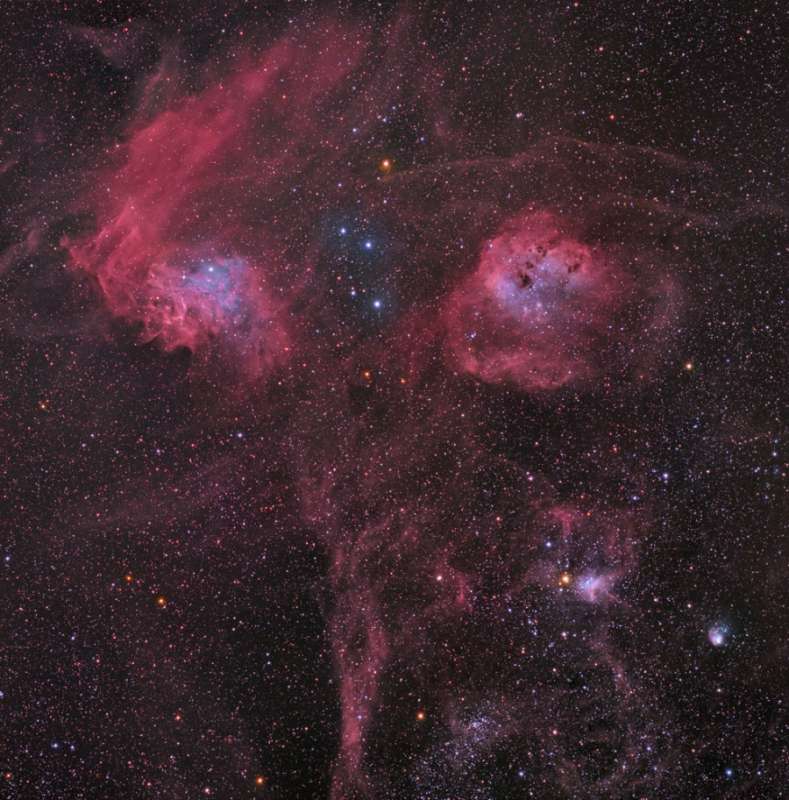
|
Credit & Copyright: Steve
Cannistra
(StarryWonders)
Explanation:
Rich in star clusters and nebulae, the ancient
constellation of Auriga, the Charioteer,
rides high in northern winter night skies.
Composed from narrow and broadband filter data and
spanning nearly 8 Full Moons (4 degrees) on the sky,
this
deep telescopic view recorded in January
shows off some of Auriga's celestial bounty.
The field includes emission region IC 405 (top left) about 1,500
light-years distant.
Also known as the Flaming Star Nebula,
its red, convoluted clouds
of glowing hydrogen gas are energized by hot O-type star AE Aurigae.
IC 410 (top right)
is significantly more distant, some 12,000 light-years away.
The star forming region is famous for
its embedded young star cluster, NGC 1893,
and tadpole-shaped clouds of dust and gas.
IC 417 and NGC 1931 at the lower right,
the Spider and the Fly, are also young star
clusters embedded in natal clouds that lie far beyond IC 405.
Star cluster NGC 1907
is near the bottom edge of the frame, just right of center.
The crowded field of view looks along the plane of our
Milky Way
galaxy, near the direction of the
galactic anticenter.
|
January February March April May June July August September October November December |
| ||||||||||||||||||||||||||||||||||||||||||||||||
NASA Web Site Statements, Warnings, and Disclaimers
NASA Official: Jay Norris. Specific rights apply.
A service of: LHEA at NASA / GSFC
& Michigan Tech. U.
Based on Astronomy Picture
Of the Day
